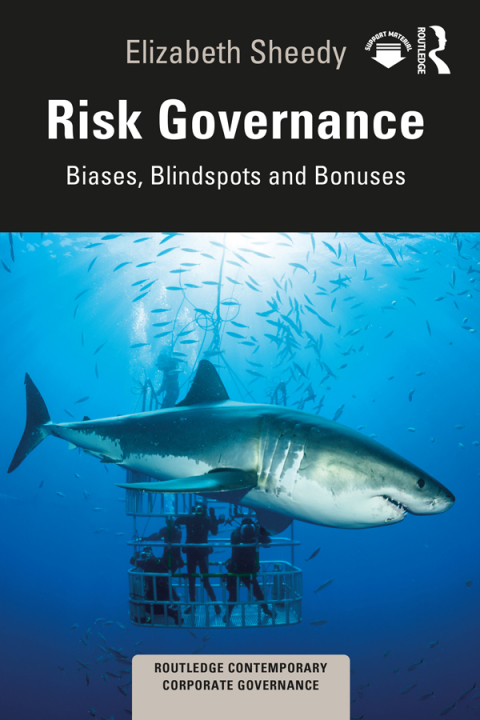Description
Efnisyfirlit
- Cover
- Half Title
- Series Page
- Title Page
- Copyright Page
- Dedication Page
- Contents
- List of figures
- List of tables
- Biography
- Foreword
- Preface
- Part A Foundations of risk governance
- 1 Emergence of risk governance
- 1.1 Risk management and regulation
- 1.2 Biases and blind spots
- 1.3 Timing and incentives
- 1.4 Financial institutions as risk governance catalysts
- 1.5 Conclusion
- Notes
- 2 Structures of risk governance
- 2.1 Defining risk and risk management
- 2.2 The role of the board of directors
- 2.2.1 Risk appetite and strategy
- 2.2.2 Risk framework and policy
- 2.2.3 Supervising the executive
- 2.2.4 Risk accountability
- 2.3 Board risk committee
- 2.4 Risk in the executive – chief risk officer
- 2.5 Risk management function
- 2.6 Compliance function
- 2.7 Assurance
- 2.8 Three lines model (aka three lines of defence)
- 2.9 Executive compensation
- 2.10 Risk disclosures
- 2.11 Evidence for risk governance
- Notes
- Further reading and resources
- 3 Assessing and embedding risk culture
- 3.1 Risk culture/climate versus organisational culture
- 3.2 Risk culture and risk management maturity
- 3.3 Measuring risk culture
- 3.3.1 Observation and interviews
- 3.3.2 Risk culture surveys
- 3.3.3 Other data sources
- 3.4 Building risk culture
- 3.4.1 Guidance for boards
- 3.4.2 Speaking up and listening up
- Notes
- Further reading and resources
- 4 Incentives and accountability
- 4.1 Accountability
- 4.2 Remuneration and performance measurement
- 4.2.1 Components of executive compensation
- 4.2.2 Time trends in executive compensation
- 4.2.3 Controversies in executive compensation
- 4.2.4 Pay/performance sensitivity
- 4.2.5 The balanced scorecard and gateways
- 4.2.6 Deferrals and share-based remuneration
- Notes
- Part B The risk management process
- 5 Risk management process overview
- 5.1 Communication and consultation
- 5.2 Scope, context and criteria
- 5.3 Risk assessment
- 5.4 Risk treatment
- 5.5 Recording and reporting
- 5.6 Monitoring and review
- 6 Communicating and influencing for risk governance
- 6.1 Dealing with hostility and suspicion
- 6.2 Dealing with apathy and overconfidence
- 6.3 Use of storytelling
- 6.4 Appealing to fear
- 6.5 General principles
- 6.6 Quantitative information
- Notes
- Further reading and resources
- 7 Context, criteria and risk appetite
- 7.1 Context
- 7.1.1 SMEs
- 7.1.2 Start-ups
- 7.2 Criteria
- 7.2.1 Public sector
- 7.3 Risk appetite
- Notes
- Further reading and resources
- 8 Risk analysis
- 8.1 Quantitative risk analysis
- 8.1.1 Case study: Larry’s Luxury Food and Wine (with accompanying spreadsheet)
- 8.2 Analysing risk interactions
- 8.2.1 Interactions at Singapore Airlines
- 8.2.2 Interactions at BHP
- 8.2.3 Credit and operational risk interactions in banking
- 8.3 Managing model risk
- 8.4 Subjective risk analysis
- Notes
- Further reading and resources
- 9 Risk treatment
- 9.1 Treatments and their (unforeseen) consequences
- 9.2 Treating ‘financial risks’
- 9.3 Operational treatments and flexibility
- 9.4 Financial flexibility as a risk management strategy
- 9.4.1 Case study: Larry’s Luxury Food and Wine revisited
- 9.4.2 Case study: BHP revisited
- 9.5 Treating multiple risks simultaneously
- 9.6 Evaluating expensive risk treatments
- Notes
- Further reading and resources
- 10 Report, monitor, review
- 10.1 Link to objectives
- 10.2 Reporting to line 1
- 10.3 Board risk reporting
- 10.4 Monitoring and review
- Note
- Part C Case studies
- 11 Volkswagen Dieselgate case
- Notes
- 12 CBA/conduct risk case study
- 12.1 Governance, culture and accountability at the CBA
- Notes
- Further reading and resources
- 13 Strategic risk management
- 13.1 Strategic risk identification with the PESTLE
- 13.2 Evaluating strategic risk through scenario analysis
- 13.3 Treating strategic risk: flexibility and preparedness
- 13.4 Monitoring and reviewing strategic risk
- Notes
- Further reading and resources
- 14 Climate risk management
- 14.1 Potential strategic responses
- 14.1.1 Accept
- 14.1.2 Operational adaptation
- 14.1.3 Diversification and transition
- 14.1.4 Divestment
- 14.1.5 Managed decline
- 14.1.6 Insurance and other contractual solutions
- 14.1.7 Financial flexibility
- 14.2 Governance of climate risk
- 14.2.1 Board focus
- 14.2.2 Disclosure
- 14.2.3 Communication
- 14.2.4 Incentives
- 14.2.5 Analysis
- Notes
- Further reading and resources
- 15 Cyber risk
- 15.1 Nature of impact
- 15.2 Why is cyber risk so challenging?
- 15.3 Cyber security frameworks
- 15.4 Insurance
- Notes
- Further reading and resources
- 16 COVID-19 pandemic
- 16.1 Behaviour changes and dread risk
- 16.2 Financial and operational adaptation
- 16.3 Rethinking risk management: resilience and adaptability
- Notes
- Further reading and resources
- Risk governance glossary
- Index







Reviews
There are no reviews yet.